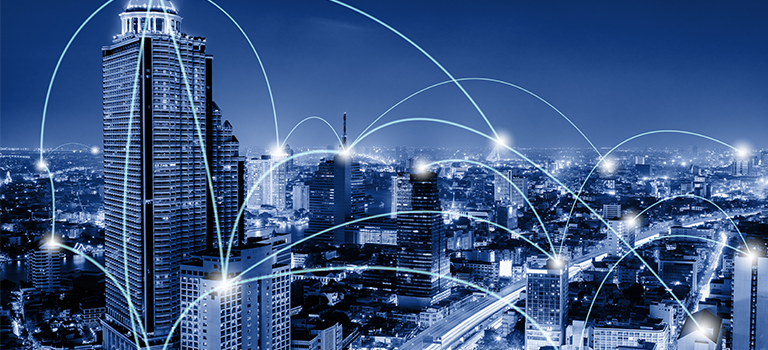2025, a year where Americans will have 260 million 5G connections! Welcome to the era of intelligent connectivity.
“Intelligent Connectivity: How the Combination of 5G, AI and IoT Is Set to Change the Americas,” a report issued by GSMA (Global System for Mobile Association) at the 2018 Mobile World Congress Americas, highlighted how this region will gain benefits through the impact caused by ‘intelligent connectivity.’
At the global level, the number of 5G connections will reach 1.3 billion by 2025. In total, this will consume 40% of the world’s population or an approximate estimation of nearly 2.7 billion people. In the same period, the Americas region will experience the growth of over 260 million 5G connections. This sums to around 20% of the global market.
Intelligent Connectivity; The Intertwined Relationship Between 5G, IoT, and AI
Intelligent connectivity is a vital enabler for applications, be it artificial intelligence (AI) or augmented reality (AR). This is formed from new 5G techniques that include connecting assets with artificial intelligence at the network edge and network slicing.
- It is projected to cause a significant impact on the industry, the society, and even individuals, marking the new beginning defined by highly contextualized as well as personalized experiences.
- AR and VR to transform the way we watch live sports and music concerts.
- You can get packages delivered to your homes with the help of drones.
- There will be virtual personal assistants to ease our daily lives by managing our schedules.
All thanks to intelligent connectivity: 5G, AI, and IoT are already changing the world and connecting everything and everyone toward a better future.
What Exactly is Intelligent Connectivity?
Here’s a definition by Daniel Quant, the vice president of strategic development at MultiTech,
“Intelligent connectivity is the evolution of dumb, no smarts connectivity to a more resilient, resource-efficient, data communication architecture where decision making is distributed to the edge or assets, making things quicker and easier to customize actions the way you want.”
In simple terms, it is the combination of 5G, artificial intelligence (AI), and internet of things (IoT) that forms what we call “intelligent connectivity.”
There are 9 billion connections available globally. Mobile is the widest reaching tech platform. This number will drastically impact our daily lives – from the way we learn or interact with our colleagues, to the way we’re learning and consuming entertainment. It is going to provide people with all kinds of information they’re looking for. Additionally, it will provide instant information on people to make our lives efficient and more productive. This will impact the industries and change how they operate.
While the industry undergoes a paradigm shift of new services and new experiences, we’re also seeing how the unprecedented responsiveness of 5G is enabling businesses and consumers. People are hugely benefiting from the tactile internet, where control of machines and these devices are at their fingertips.
AI professionals who possess skills and understand different tools and techniques will be the ones who can work best with intelligent connectivity.
Major Keys to Embracing Intelligent Connectivity
Connectivity
Intelligent connectivity largely focuses on the deployment of 5G due to an increase in digital density.
In simple words, this functions as the percentage of connected data used in a unit of activity (the activity can be of a country, a region, an organization, a business unit, or even an industry).
While digital density increases, the defined line between the digital and the physical will start fading – this will further harness a new and blended environment where both people and things will be connected.
The connectivity between the physical and digital world is unfathomable.There is an indescribable driving force of digital transformation where connected data is now becoming one of the key assets for organizations.
Artificial intelligence
AI is one of the major factors that offers an exceptional increase of digital density because of the rise of data through people, objects, and organizations via IoT. Big data helps creative predicative algorithms by training through machine learning systems. Other factors include cost reduction of computation along with the improvements in machine learning algorithms and democratization access of AI applications.
As data keeps growing, the digital density will increase to represent the world in a better way. All in all, AI professionals will be reaping an abundance of benefits as we keep seeing disruptive innovations in artificial intelligence.
Digital Wellness
Digital wellness majorly focuses on the human impact caused by AI. This is technology that either substitutes or expands human activities. Managers will need to be extra careful when it comes to tackling the externalizations caused by AI; majorly the negative ones that are beyond the impact caused by a business model.
Digital Trust
Undeniably, an increase in digital density will help organizations benefit hugely by creating value propositions.
With benefits come challenges and threats. Thus, in the wake of intelligent connectivity, organizations will need to address issues such as data privacy, integration, reliability, and security as they are related to how vulnerable digital density can be against cyber-attacks.
The Fusion of 5G, IoT, and AI – Why it is Unique?
5G, IoT, and AI combination act as key factors to accelerate technological development and enable newer digital services.
Information collected by sensors, devices, and machines, can now be easily analyzed by AI technology. Doing so enables the provision of having personalized experiences to the users and helps in decision making. This gives it a clearer path to have a higher rate of productivity and effective interaction between the environment and people. As a result, AI engineers are responsible to leverage the potential of intelligent connectivity.
Due to advancements in AI, training of data science professionals, along with the availability of machine learning tools used to develop advanced algorithms, pushing use of IoT into the world where there’s practical suitability.
5G is the missing piece of the puzzle between AI, and IoT.


